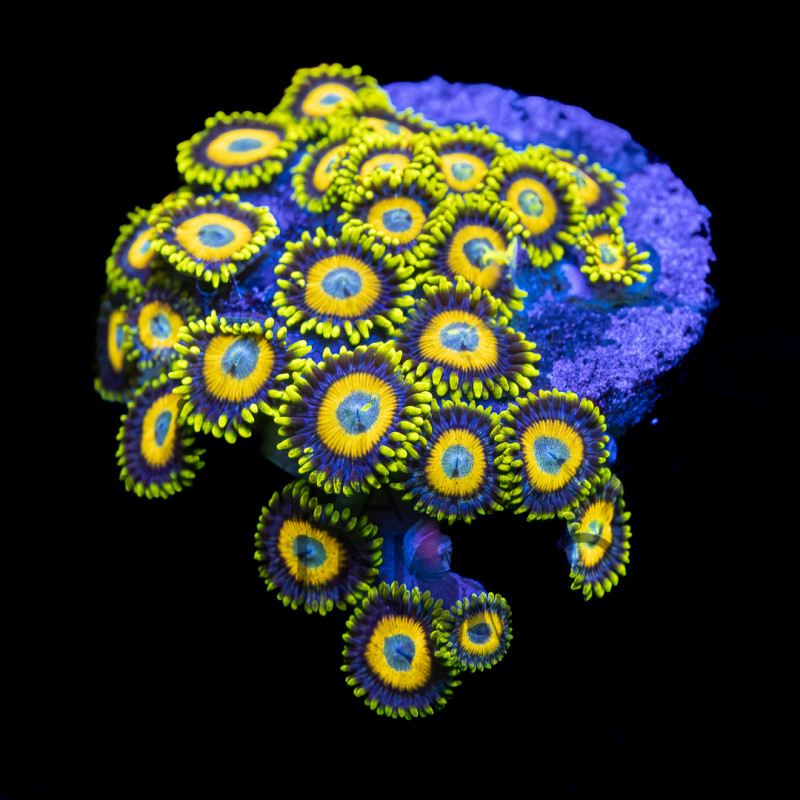More info
Zoanthus "Scrambled Egg"
The Scrambled Eggs Zoas have blue/purple mouths surrounded by an orange color and end with purple tentacles with yellow/orange tips.
Unique piece - "What You See Is What You Get" (WYSIWYG)!
What You See Is What You Get
The Zoanthid Family (Zoanthids)
Zoanthids and Palythoas (Palythoa) are a large group of corals famous in the aquarium hobby. With an incredible range of colors and patterns, they have become very popular for both beginners and collectors of rare corals looking for less common colors and patterns.
In terms of care, both zoanthids and palythoa are quite easy to maintain. They tolerate a wide range of light intensities and water conditions. Once attached, zoas multiply rapidly.
Identification
There is no scientific consensus on the phylogeny of Zoanthid and Palythoa. In layman's terms, it is not known for sure where zoanthids end and Palythoa begins. What was once 300 identified species has been reduced to about 50-60 in recent years, depending on the criteria used to differentiate different morphs. There is new knowledge about classification due to the introduction of genetic tests, but for the purposes of Aquorinoco, focusing on the hobby, we choose to arbitrarily group individuals with larger polyps into Palythoa and specimens with smaller polyps into zoanthids.
Care and Handling
Some zoanthids and palythoa contain a powerful neurotoxin called palitoxin in their tissue, which can be extremely harmful if it enters your bloodstream. By harmful, we mean deadly. Be especially careful when handling these polyps for this reason, especially if:
1) you have open cuts on your hands.
2) you are cutting the corals, irritating them.
We always recommend the use of gloves and a mask when handling zoanthus in these circumstances.
See below for more care tips for Zoas and Palys.
Location
Found in coral reefs around the world, these polyps are mainly harvested in the Indo-Pacific islands, including Fiji, Tonga, Solomon Islands, and the Great Barrier Reef. Zoanthids and Palythoa have an incredible variety of colors and patterns that make them one of the most popular corals in the reef aquarium.
Lighting
Zoanthids and Palythoa are not as demanding when it comes to lighting. They can be kept under a wide variety of lighting types and are tolerant of both low and high lighting conditions. However, it is always advisable to acclimate newcomers in low-light areas because they are much more likely to be damaged by overexposure than to starve from underexposure.

Low light |
Low light is between 30 - 50 PAR per unit area |

Medium light |
Medium light is between 50 - 150 PAR per unit area |
|
High light |
High light is above 150 PAR per unit area |
Water Flow
Moderate to high water movement is recommended. Zoas and Palys benefit from sufficient flow to prevent debris from accumulating on them.
Feeding
Although zoanthid and palythoa polyps derive much of their energy from the products of their zooxanthellae, they have the ability to capture prey. Palythoa seem to feed much more readily than their Zoanthid counterparts. We recommend using suspended phytoplankton (e.g., Easy Booster) as food for Zoanthids and Palys!

```




